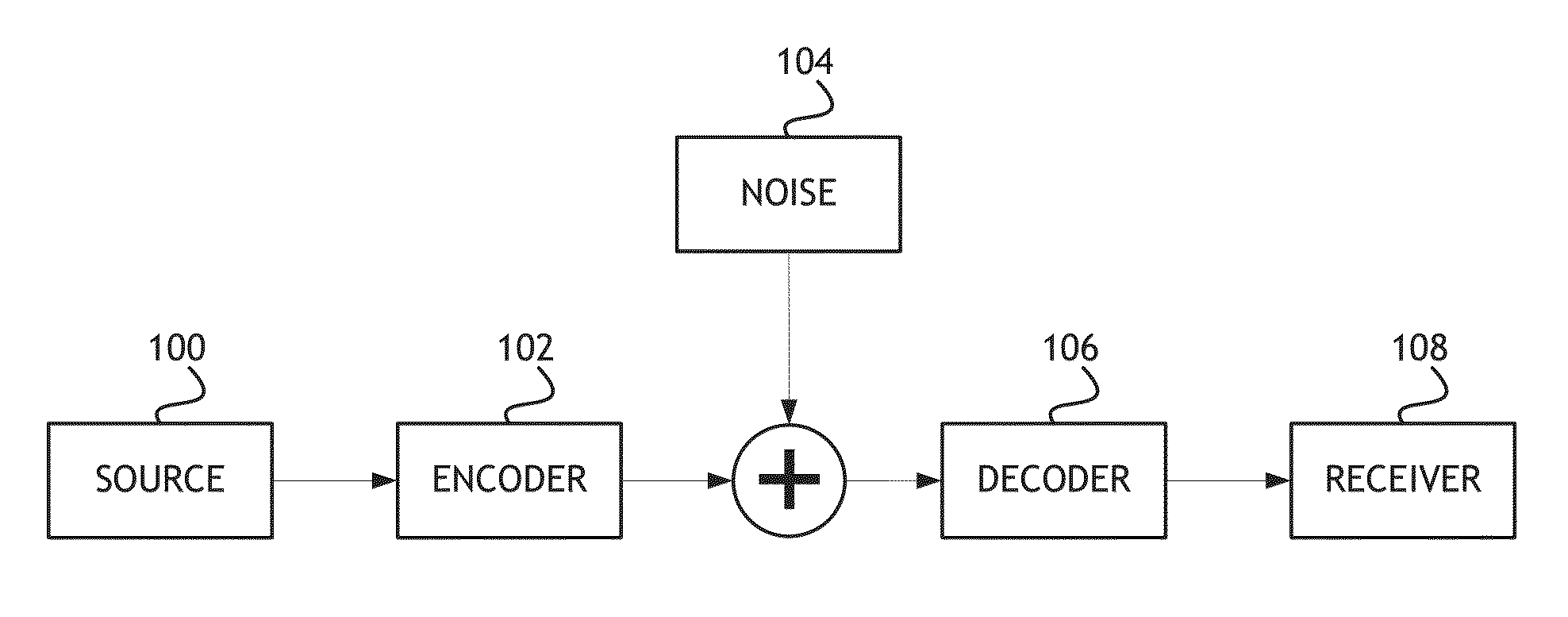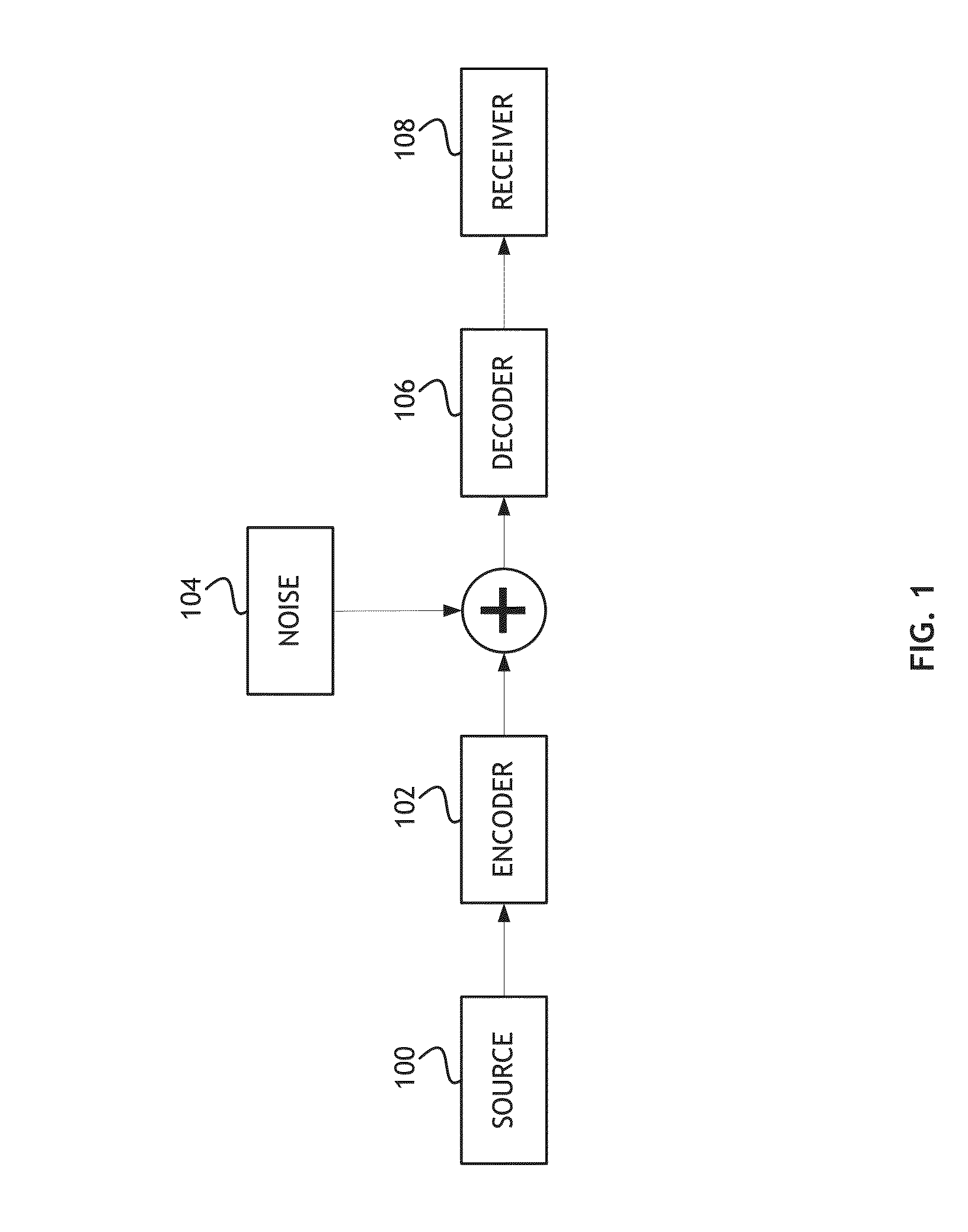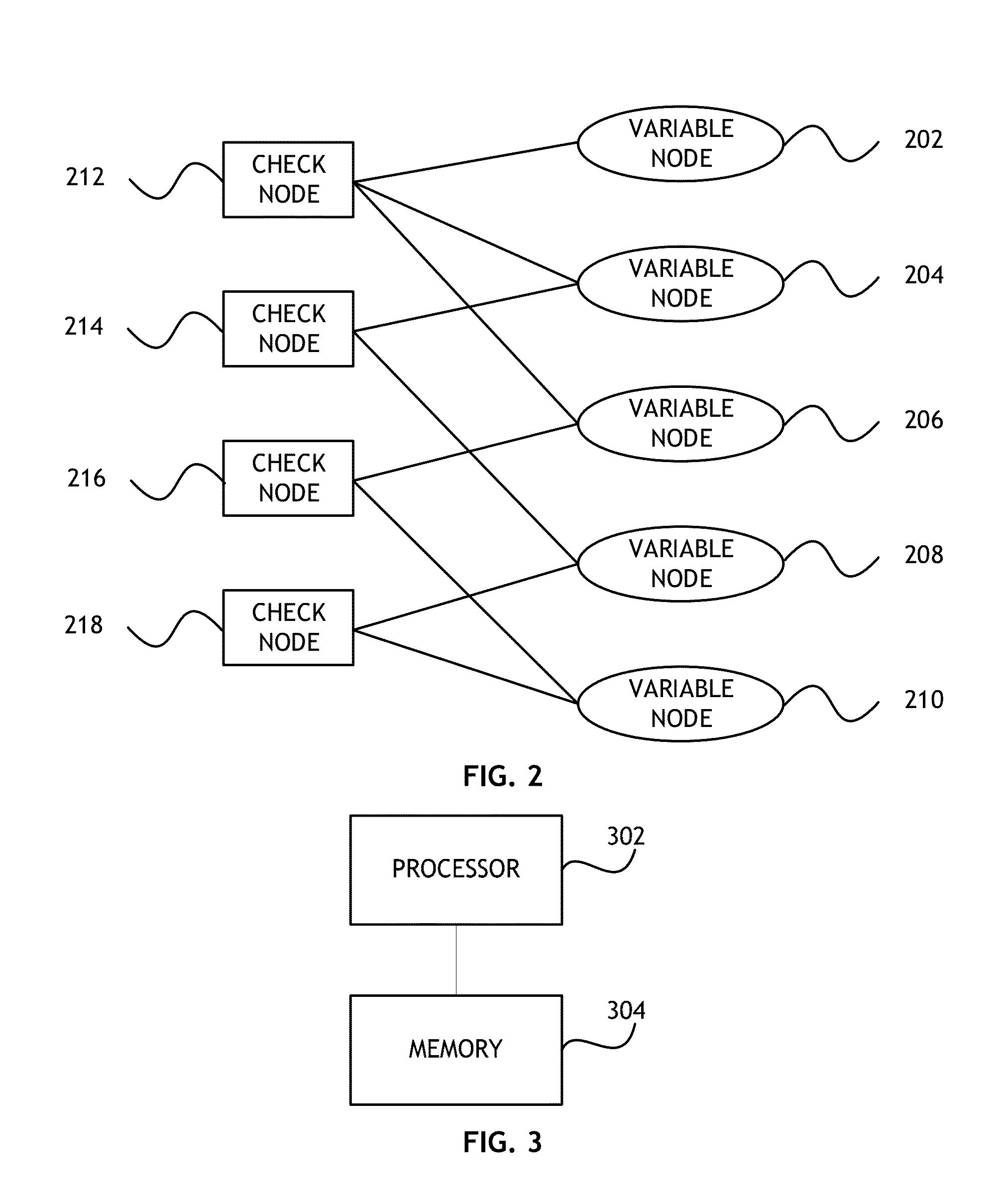Test signal generator for low-density parity-check decoder
a low-density parity-check and signal generator technology, applied in the direction of coding theory basic assumptions, code conversion, code conversion, etc., can solve the problems of rare noise in the read channel error due to noise, the np-complete problem of decoding a low-density parity-check code on the binary symmetric channel, and the bad situation of the decoder
- Summary
- Abstract
- Description
- Claims
- Application Information
AI Technical Summary
Benefits of technology
Problems solved by technology
Method used
Image
Examples
Embodiment Construction
[0027]Reference will now be made in detail to the subject matter disclosed, which is illustrated in the accompanying drawings. The scope of the invention is limited only by the claims; numerous alternatives, modifications and equivalents are encompassed. For the purpose of clarity, technical material that is known in the technical fields related to the embodiments has not been described in detail to avoid unnecessarily obscuring the description.
[0028]Referring to FIG. 1, a block diagram of a data transmission path for a low-density parity-check code is shown. In at least one embodiment of the present invention, the standard data transmission path includes a signal source 100 that generates a signal for transmission. The signal produced by the source 100 is encoded by an encoder 102. The encoder 102 is a processor, or computer executable program code embodied in a processor, configured to add features to the signal that enhance data integrity. For example, the encoder 102 adds data b...
PUM
 Login to View More
Login to View More Abstract
Description
Claims
Application Information
 Login to View More
Login to View More - R&D
- Intellectual Property
- Life Sciences
- Materials
- Tech Scout
- Unparalleled Data Quality
- Higher Quality Content
- 60% Fewer Hallucinations
Browse by: Latest US Patents, China's latest patents, Technical Efficacy Thesaurus, Application Domain, Technology Topic, Popular Technical Reports.
© 2025 PatSnap. All rights reserved.Legal|Privacy policy|Modern Slavery Act Transparency Statement|Sitemap|About US| Contact US: help@patsnap.com



